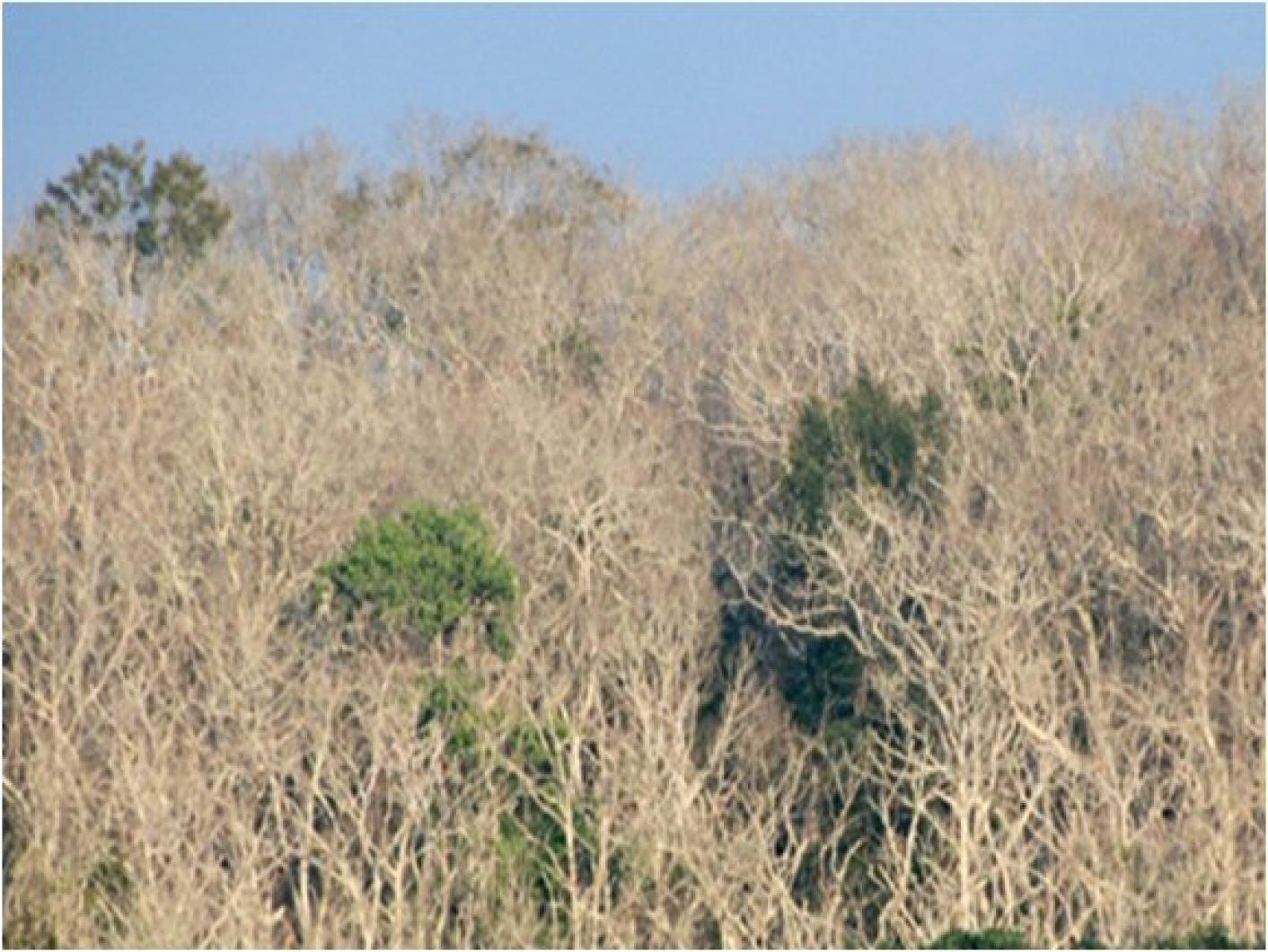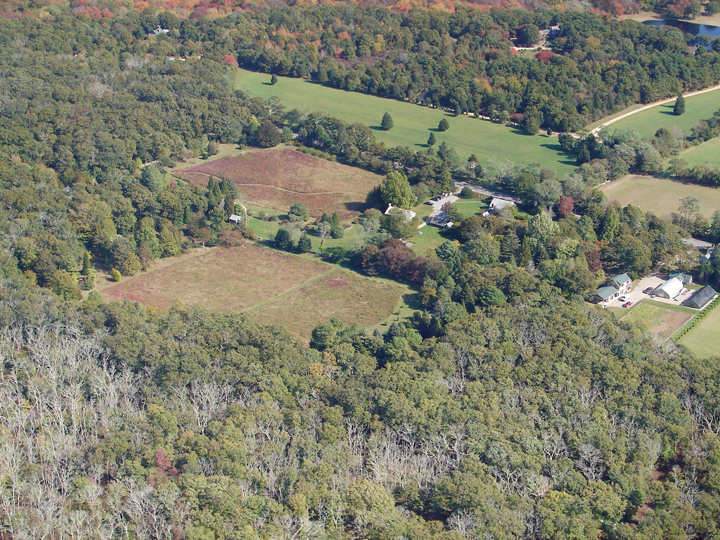For Polly Hill Arboretum director Tim Boland, the swift demise of his oak forest that spans the arboretum property has been literally startling. “I’d be outside in the collections this winter and I would just hear wha-BAM!” The trees, ravaged by a plague of caterpillar infestation that lasted just over three years from 2005 to 2008, are now hollowed and rotting, teetering toward collapse. “I used to think these trees would stand for the next 10 years or so. They won’t. Within the next three to four years they’ll all be down,” Mr. Boland said.
If anything has been more impressive than the forest’s destruction, however, it has been its regeneration.
From afar, the damage is astounding. From North Road looking east, the swath of dead wood looks like some hoary frost, a Narnia of defoliated trees ensconced in summer greenery. From an ecological perspective though, this landscape of devastation is deceiving.
“One of the interesting things about any type of major natural disturbance — fires, hurricanes or in this case insect defoliation and mortality — is despite the fact that it looks catastrophic, so much of the forest is still intact,” said David Foster, director of the Harvard Forest. Mr. Foster has been studying the oak die-off since it began in 2005. “The soil is all still there, all the understory shrubs and trees that didn’t die are still there and the vegetation that’s left in the forest is growing at an absolutely phenomenal rate,” he said.
Walking through the woods as the gray limbs sway perilously above, crumbling monuments to the cankerworm’s industry, a vital burgeoning ecosystem is being reborn below. Where oaks once shaded and stunted undergrowth a shrubland ecosystem is taking off.
“The hydrology of this forest is changing,” said Mr. Boland. “These trees used to pump more than 100 gallons of water up their trunks and transpire them out to the air through evapotranspiration.”
With the canopy cover gone and sunlight now hitting the ground, that water is helping to power the explosive growth of formerly underdeveloped plants in the understory.
“We have had incredible blueberry crops recently,” Mr. Boland said. In addition to blueberry, black cherry, catbriar, blackberry and other shrubs have enjoyed a revival, welcoming with them a new suite of animals, especially birds. One bird that has particularly enjoyed the downfall of the oaks has been the woodpecker, which is having a field day in the wooden wonderland.
The transition to shrubland is only temporary, however, and the next generation of trees is already vying for sunlight and space. Mr. Boland estimates his beech trees, the aggressive heirs to the forest, have already grown four feet since the die-off, 18 inches this year alone by his estimation. Ironically, this new forest that will come to replace the old one may more closely resemble the ancient forests of the Island.
“Historically, at the time of European arrival to Martha’s Vineyard, there were many more beech trees,” said Mr. Foster. “It’s one of the species that declined the most because of all of the activity in the last three to four hundred years.”
Mr. Foster is grateful that the die-off occurred where it did on the Vineyard, namely in a large block of uninterrupted forest, as intact ecosystems have a much easier time recovering from catastrophic events than more fragmented landscapes. He sees in recent events parallels to the Yellowstone fires of 1988.
“Everyone from Reagan on down talked about it being a calamity, but people who study natural ecosystems knew that Yellowstone burns all the time on a geological scale, and, in fact, it came right back. Drive through Yellowstone today and most people can’t tell it ever burned. It’s only when we fragment and make small patches of forest that nature has a hard time recovering. Polly Hill Arboretum and the Woods family’s decision not to fix the situation is what allowed it to recover,” the noted forest expert said.
Mr. Boland agreed.
“Humans are reactionary. The arboretum has always been seen as the tree answer people but people didn’t like my answer when these were dying. People were asking, ‘Are you going to spray your forest?’ and I said, ‘Actually, no, we’re not.’”
The recent die-off, which was caused by a crippling drought coupled with a persistent insect infestation, was not unprecedented in Island history. Mr. Foster’s own research in studying ancient lake levels and pollen core samples drawn from the bottom of Island ponds, point to a dramatic drought and attendant “pulse of mortality” in the Island oak population 5,000 years ago. In this latest episode of drought and death, Mr. Foster sees a portent for the world at large.
“People think of climate change as something that happens and then natural landscapes respond slowly in a progressive way. But, in fact, if climate change interacts with disturbances like insect outbreaks, like it has here and in Colorado, you can actually get really sudden change. That’s what we’re seeing on the Vineyard as the forest changes so quickly.”








Comments
Comment policy »